Overview
Size
The Grand Boulevard has roughly 19,945 people according to Social Explorer's 2015 report. This is about as big as 1/5 of a football stadium's seating. It is about 1.73 mi^2. 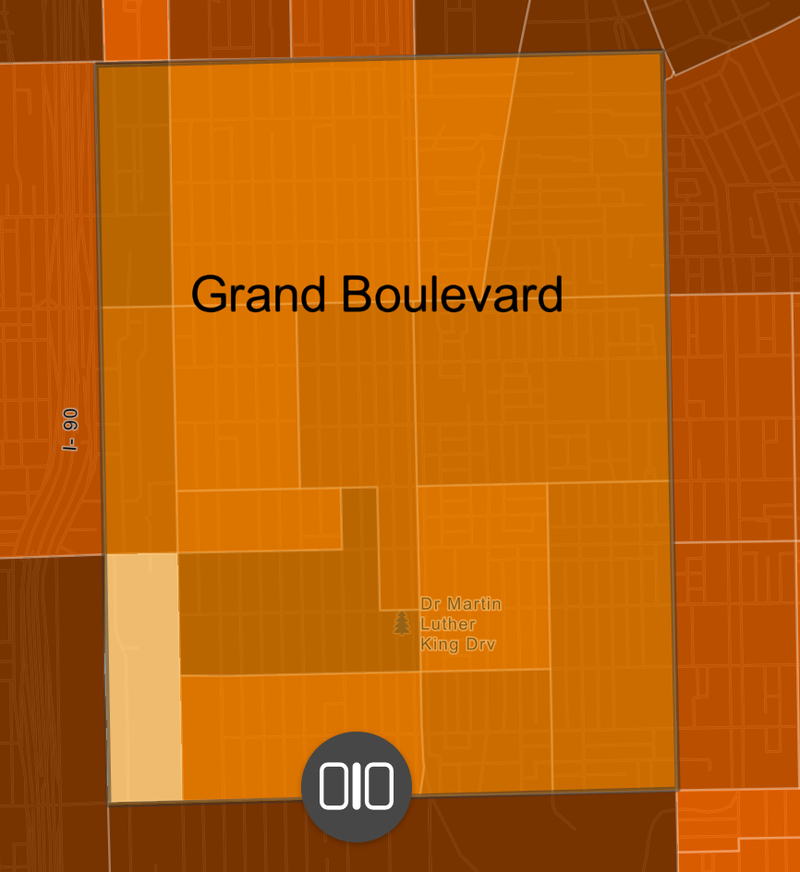
Identity
The Grand Boulevard Neighborhood definitely has coherence to it. The area has an abundance of resources including big grocery stores, schools, including elementary, middle, and high, cultural centers, restaurants, means of transportation, clothing stores, and anything else a neighborhood would need to meet its basic needs. There are banners along Cottage Grove in specific detailing a Roman Catholic, Hales Franciscan High School's 50 years of service to the community. A banner remembering how historic the area was also resides there. Along with banners, seen at the Harold Washington Cultural Center is a grand statue of the former Harold Washington himself with a plaque to honor him. Harold Washington was Chicago's first black mayor elected in 1983. In order to remember that the Grand Boulevard was part of a major blues scene within the city, there are two poles with men on them top of them playing instruments, one is in front of the Harold Washington Cultural Center and the other across the street.
As far as delineation, the Grand Boulevard goes from East Pershing Road to East 51st Street North to South. Going West to East, the Grand Boulevard goes from South Federal Street to South Cottage Grove Avenue making the delineation very symmetric. It is definitely a conglomerate of black life for the Southside of Chicago as it is a part of the historic Bronzeville area.
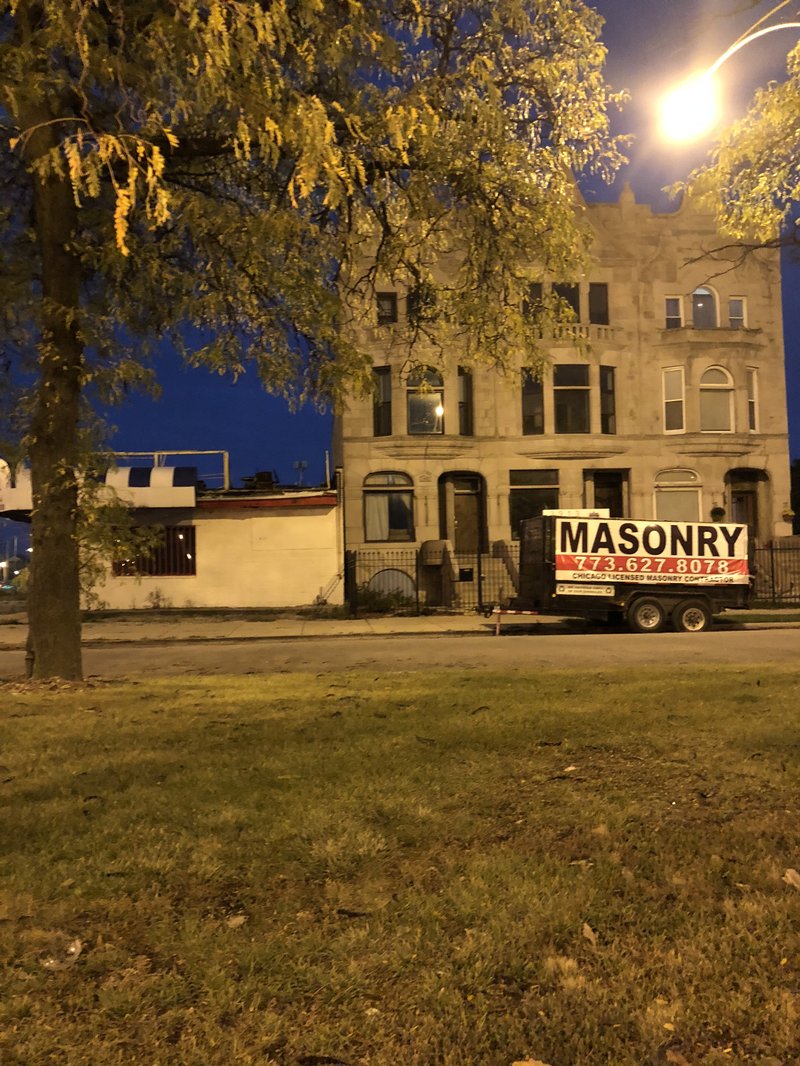
Layers
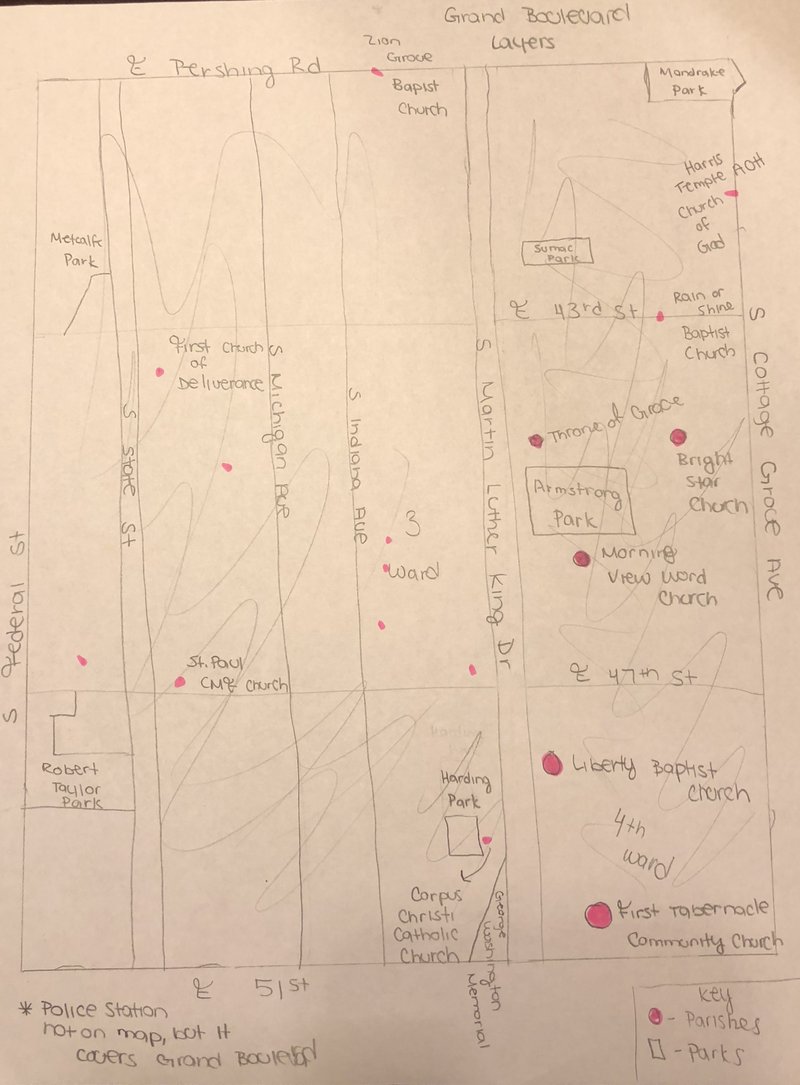
Diagram
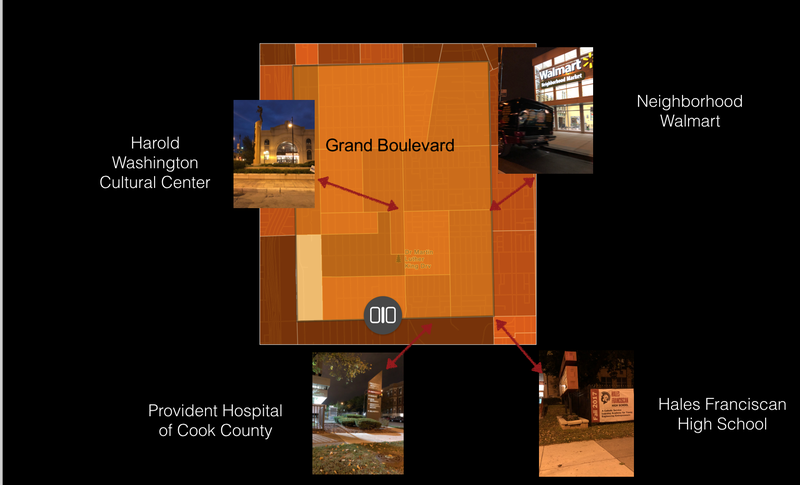
History
Grand Boulevard, located on the Southside of Chicago, was originally called the Forrestville Settlement and was a part of the Hyde Park Township before it was annexed in 1889. Spanning from East Pershing Road to East 51st Street North to South and from South Federal Street to South Cottage Grove Avenue going West to East, it was once home to many groups including those of Irish, Scottish, English, German, and Jewish origin with some African Americans. Quickly the number of African Americans completely took over the area, and by the early 2000s, there was roughly 0.6% of whites living in the area. The Grand Boulevard's name came to be because of a street located within the neighborhood called Grand Boulevard. Chicagoans now call this drive Dr. Martin Luther King, Jr. Drive or King Drive for short. The community area was once prairie like and of thick wood; today it is mostly residential and commercial.
Historically speaking, the Grand Boulevard neighborhood was a planned neighborhood being the it was a part of the Hyde Park Township meaning that the area functioned as an independent suburb of Chicago. After being annexed, again, I would have to say that the Grand Boulevard was once again a planned neighborhood filled with majority African Americans due to discriminatory housing segregation and segregation in general within the city of Chicago. Being that it was probably always an ad hoc with deliberate means of delineation, when African Americans started to take over the area, it was home to many black owned businesses, churches, theaters, clubs, and black elites until poverty and unemployment took its toll.
It is possible to broadly characterize the different types of development within the area in my opinion based off of a sequence of events: being a part of the Hyde Park Township, after being annexed, Black Hub, and in today's terms being that these were drastic changes to the neighborhood. The Grand Boulevard has always had transits running through it making the commute to downtown a breeze. There is the Green Line EL with stops that run through the neighborhood. A government building within the neighborhood included the Ida B. Wells Housing Project 1939-2011, which were the Chicago Housing Authority's project homes for majority African Americans.
Bowly, Devereux, Jr. The Poorhouse: Subsidized Housing in Chicago, 1895–1976. 1978.
Holt, Glen E., and Dominic A. Pacyga. “Grand Boulevard.” In Chicago: A Historical Guide to the Neighborhoods: The Loop and the South Side. 1979.
Keating, Ann Durkin. Building Chicago: Suburban Developers and the Creation of a Divided Metropolis. 1988.
Reed, Christopher R., and Annie Ruth Leslie, “Grand Boulevard.” In Local Community Fact Book: Chicago Metropolitan Area, 1990, ed. Chicago Fact Book Consortium. 1995. 1990.s
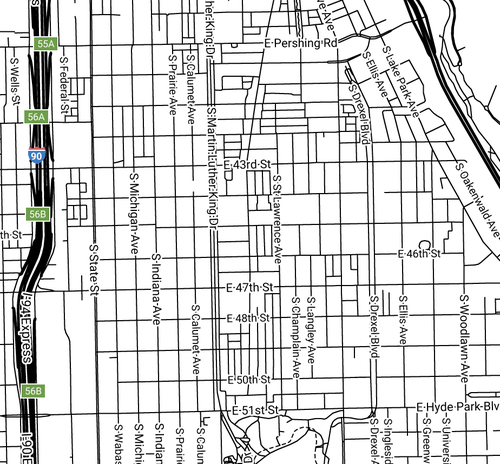
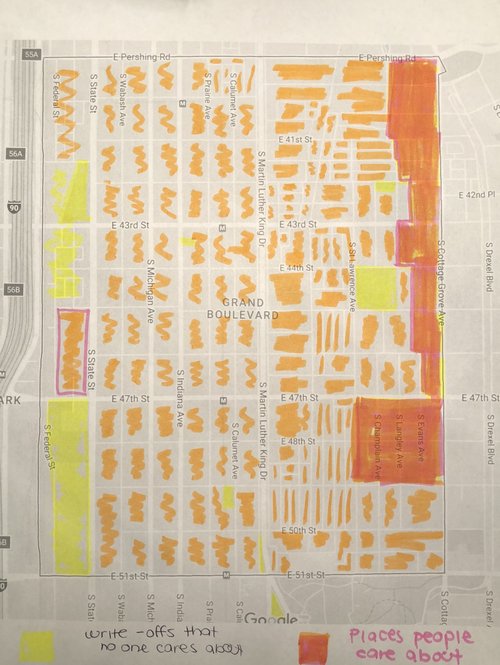
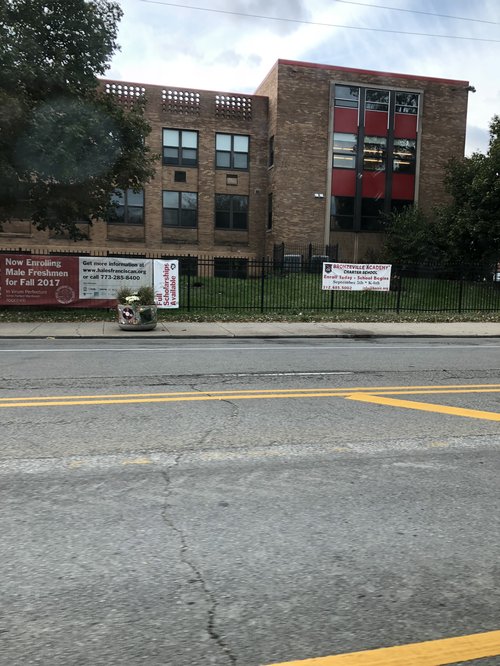 Hales Franciscan High School is a private Roman Catholic High School located on 49th Cottage Grove. Being that is located on the busy Cottage Grove Avenue, it is visible to the public. Although it is a private school, many public events happen within the realms of the space including football games, soccer games, dances, standardized testing, and more. There aren't any negative critiques to say about the space being that it is accessible to the community members if in the event they wanted to use it. On the other hand, I will say that the space is balanced making it easy for traffic to flow and pedestrians to walk, engaging because of the black and red color scheme/ how the schools looks overall, and meaningful being that it is a predominantly African American school in the midst of an African American neighborhood willing to provide men with a proper education.
Hales Franciscan High School is a private Roman Catholic High School located on 49th Cottage Grove. Being that is located on the busy Cottage Grove Avenue, it is visible to the public. Although it is a private school, many public events happen within the realms of the space including football games, soccer games, dances, standardized testing, and more. There aren't any negative critiques to say about the space being that it is accessible to the community members if in the event they wanted to use it. On the other hand, I will say that the space is balanced making it easy for traffic to flow and pedestrians to walk, engaging because of the black and red color scheme/ how the schools looks overall, and meaningful being that it is a predominantly African American school in the midst of an African American neighborhood willing to provide men with a proper education.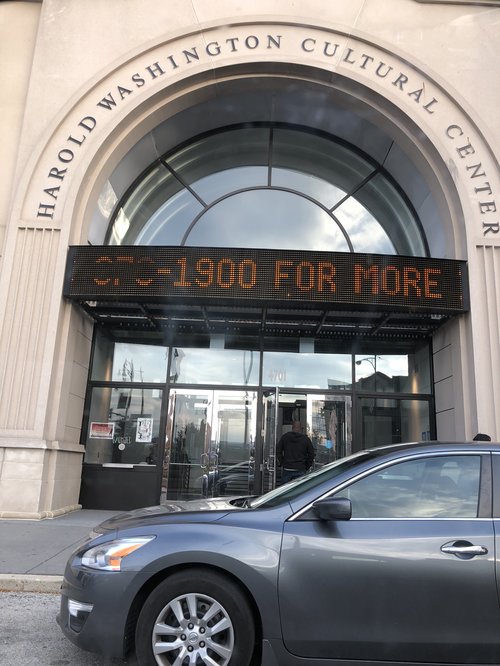
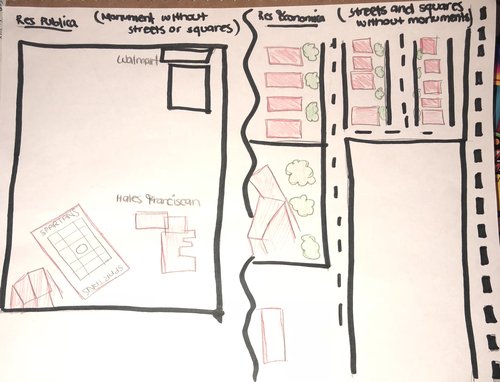
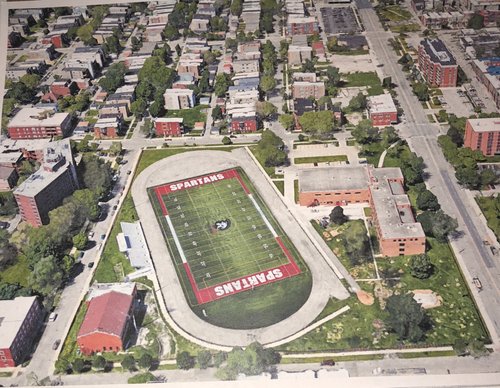
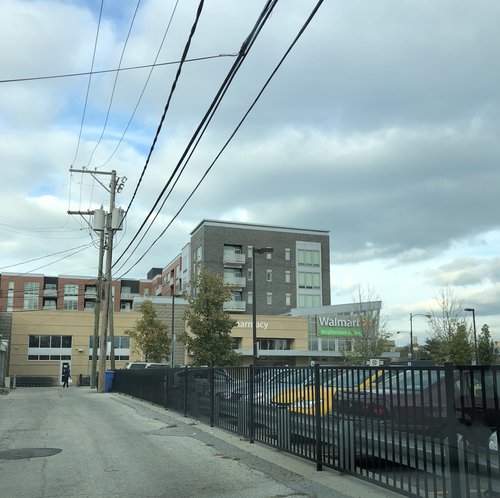
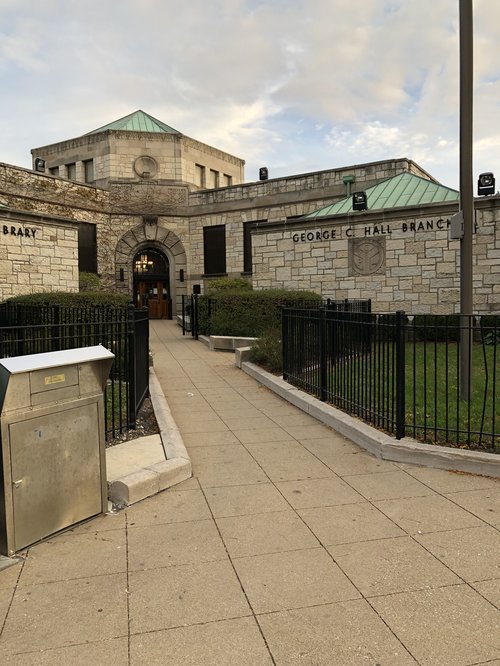 . Upon walking into the George C. Hall Branch library, I could tell that it was small and intimate. There were three big main rooms filled with book for children, adults, and magazines. There was also a small auditorium room that was for multipurpose use. There were children on the computers and doing homework in their specific room. The same thing was happening in the adult room. The library is public, warm, and also had free wifi making it the ideal place to get work done or somewhere for anyone in the area to settle. The tall ceilings and polished wood walls made for a grand feel. The library was definitely an active space.
. Upon walking into the George C. Hall Branch library, I could tell that it was small and intimate. There were three big main rooms filled with book for children, adults, and magazines. There was also a small auditorium room that was for multipurpose use. There were children on the computers and doing homework in their specific room. The same thing was happening in the adult room. The library is public, warm, and also had free wifi making it the ideal place to get work done or somewhere for anyone in the area to settle. The tall ceilings and polished wood walls made for a grand feel. The library was definitely an active space.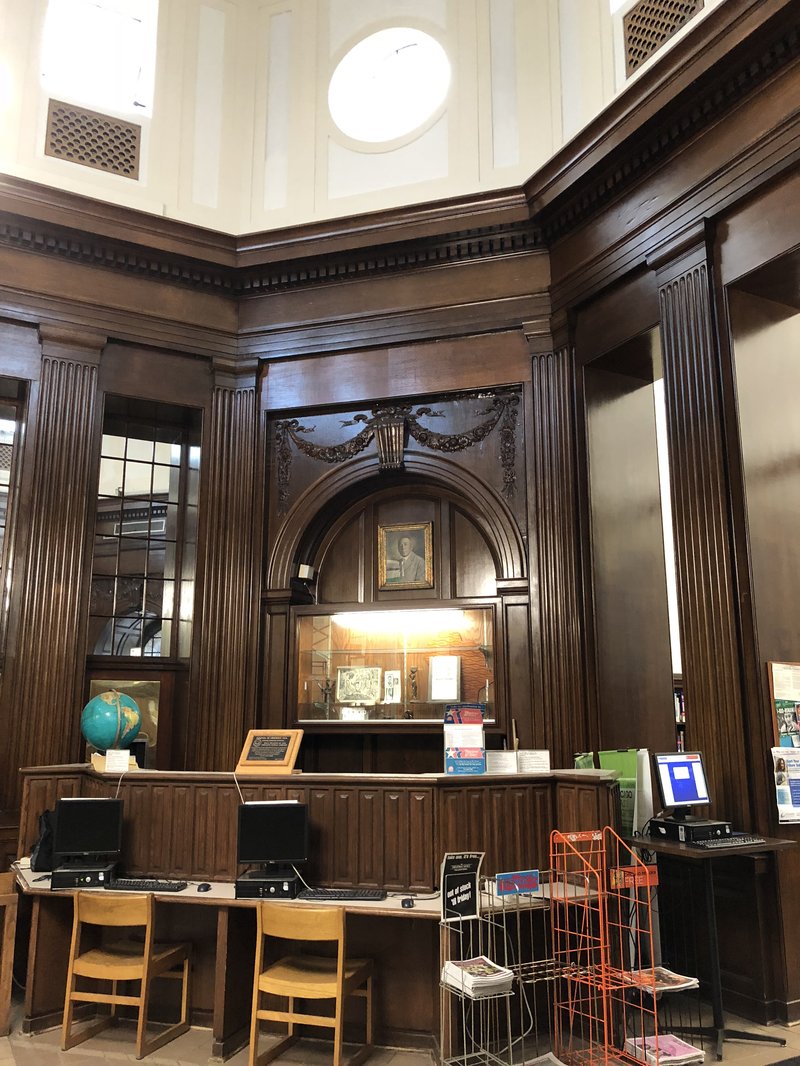
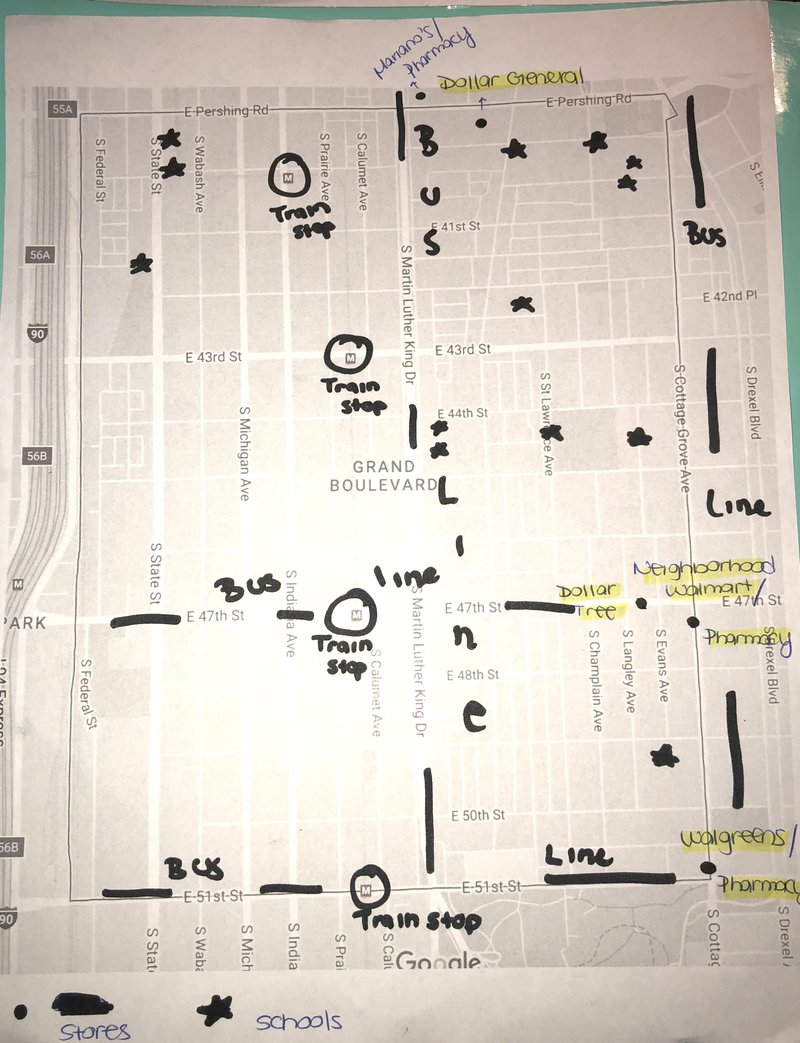
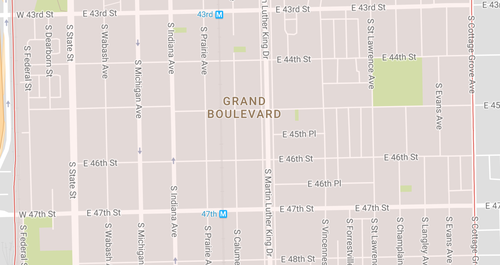
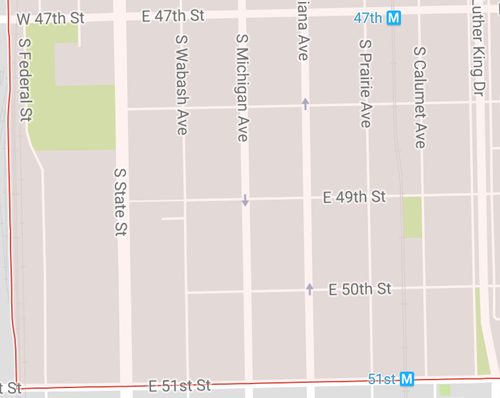
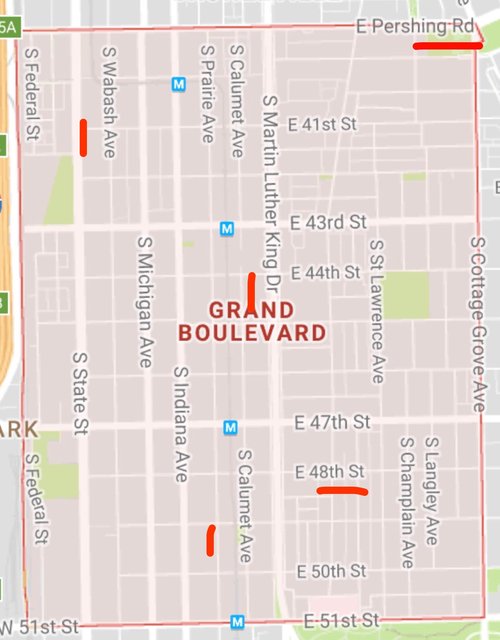
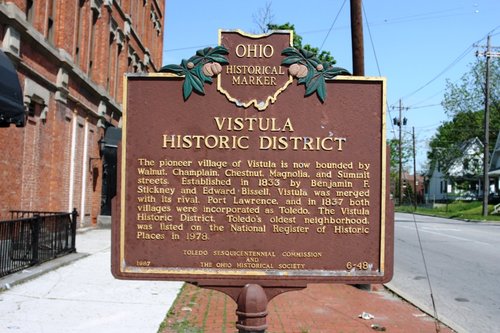
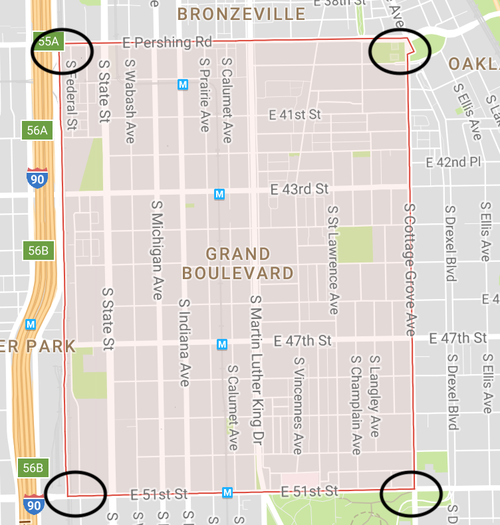 Photo Found on the Historic Vistula Foundation's Website . Photo gives an example of a sign that could potentially give the historical facts of the Grand Boulevard area and introduce/ distinguish the area from others.
Photo Found on the Historic Vistula Foundation's Website . Photo gives an example of a sign that could potentially give the historical facts of the Grand Boulevard area and introduce/ distinguish the area from others.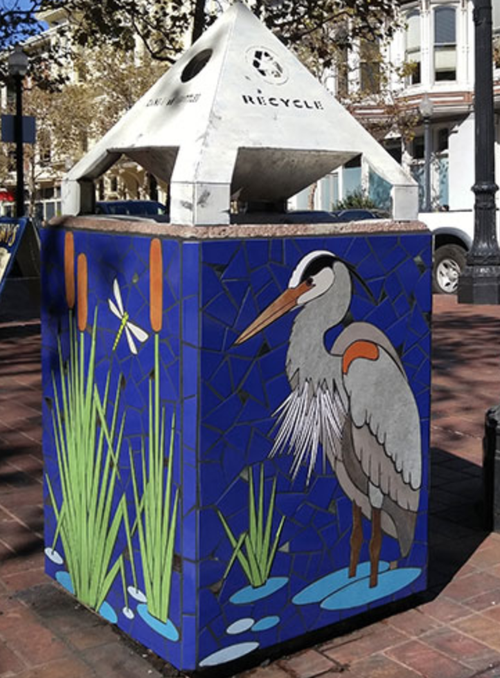

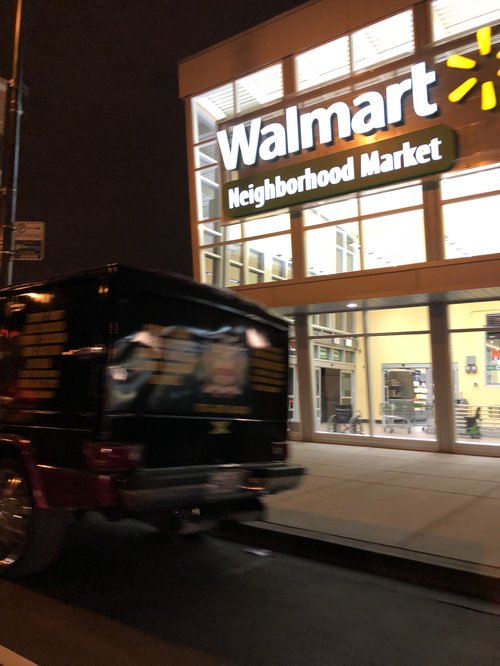
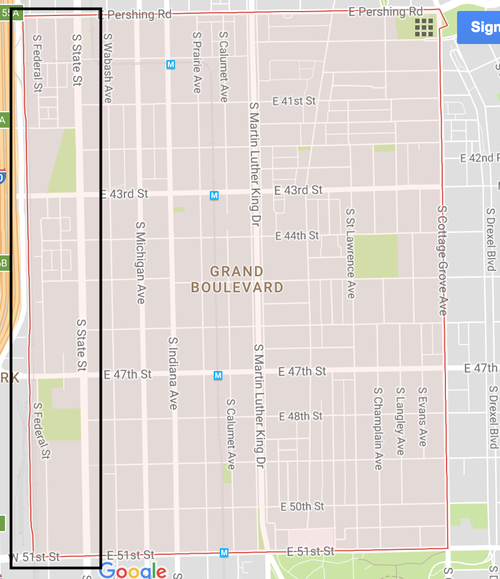
Social Mix